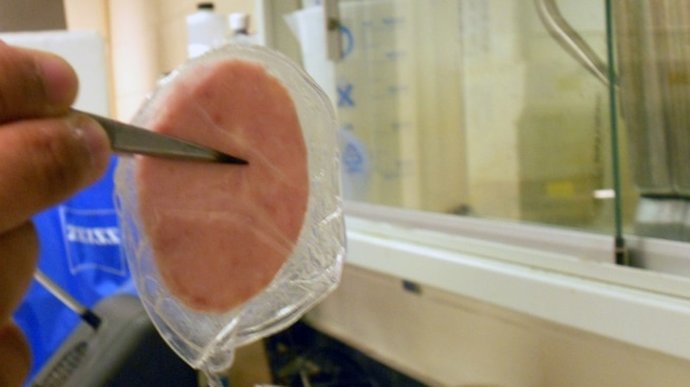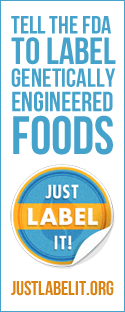|
Across the globe, discarded food packaging is polluting public spaces and pushing already overloaded landfills to the brink. Recognizing the harm that this leftover packaging does to the environment and the limitations associated with recycling it, Canada is pursuing research into biodegradable, eco-friendly food packaging developed using radiation technology.
Also read, California Could Become First State to Ban Chemicals in Fast Food Packaging. “The race to develop biodegradable packing material or eco-friendly ‘active’ food packaging is gathering momentum,” said Monique Lacroix, Director of the Research Laboratories in Sciences Applied to Food (RESALA) and researcher at the Canadian Irradiation Centre (CIC). “Packaging based on natural polymers can help address the challenges of non-biodegradable food wraps and help reduce a major source of environmental pollution.” For over 15 years, scientists at RESALA and CIC have been using their training with the IAEA to research and develop biodegradable, ‘active’ packaging materials. They do this by taking raw renewable materials such as starch or proteins and combining them with nanocellulose, which is a natural polymer that contains nano-sized cellulose fibres and then irradiating them (see Irradiating polymers and nanocomposites). This combination leads to materials with improved properties compared to conventional materials in terms of durability, biodegradability and better water resistance. “These polymers are not naturally very sturdy, but when you add nanocellulose and subject it to radiation, the polymers become tough and offer more reliable, sturdy coverage and protection of food,” explained Lacroix. “Then when we add specific bioactive materials such as essential oils from thyme, the packaging is considered ‘active’ because these additions actively help to extend the shelf life of food and assure food safety.” A growing reliance on plastic Production of plastic has surged over the past 50 years, from 15 million tonnes in 1964 to 311 million tonnes in 2014, with packaging accounting for around 26% of the total volume of plastics used worldwide, according to a 2016 World Economic Forum report on the future of plastics. The report projects that production will double in the next 20 years, as reliance on plastic grows. In Canada, for example, 9 to 15 billion plastic packages are used each year. Most packaging material is made of materials like paperboard coated with wax and plastic because of their wide availability, relatively low cost, durability and strength. However, these packaging materials are often not biodegradable, and recycling them tends to be technologically impractical and economically unviable, due to contamination by food stuff and biological substances. Global research for more eco-friendly material Radiation processing is an attractive option for the food packaging industry worldwide. To build their skills and knowledge in this area, many researchers are turning to IAEA-supported projects as an avenue for collaborating with and learning from experts like the scientists at RESALA and CIC. Among these is a five-year IAEA project that began in 2013 and has brought together scientists from 14 countries: Algeria, Bangladesh, Brazil, Canada, Egypt, Italy, Malaysia, the Philippines, Poland, Romania, Thailand, Turkey, the United Kingdom and the United States. They are now sharing ideas and strengthening their skills in developing advanced packaging material for food products using radiation technology. “Global research is focusing more and more on eco-friendly packaging material in response to new regulations where governments are making industries responsible for their use of plastic, including paying for the waste being generated because of plastic packaging,” Lacroix said. “Irradiating natural polymers to make new materials is a promising avenue to further enhance product safety and contribute to the environmental goal of reducing food packaging waste.” Irradiating polymers and nanocomposites Scientists expose natural polymers and nanocomposites to gamma radiation, X-rays or electron beams to create materials that are more stable, sealable, biodegradable and recyclable. These natural polymers include proteins, such as soya, zein, caseinate, as well as polysaccharides, such as chitosan, algae and potato extracts. These are then combined with nanocellulose — an organic, natural polymer that comes from plant matter, such as wood, and comprises nano-sized cellulose fibrils. The nanocellulose provides reinforcement to make materials sturdier. For example, scientists often use a group of milk proteins called caseins to create these new materials. There are four types of caseins: each has its own distinct molecules, but they have similar structures and compositions. These proteins can be dissolved in water and then irradiated with gamma rays. The resulting solution is then dried on a surface, which forms a free-standing solid film that can be shaped for packaging purposes. The film is stronger and more durable than conventional plastic, and when nanocellulose is added to the film and then irradiated, the film has better water resistance, which makes it particularly effective for protecting packaged food from moisture and bacteria that can compromise food safety. SOURCE Aabha Dixit, IAEA Office of Public Information and Communication
0 Comments
Leave a Reply. |
Advertisement
News & Updates
Stay informed with the latest news around foodservice, agriculture and other related food news. Advertisement Opportunities
|


 RSS Feed
RSS Feed


